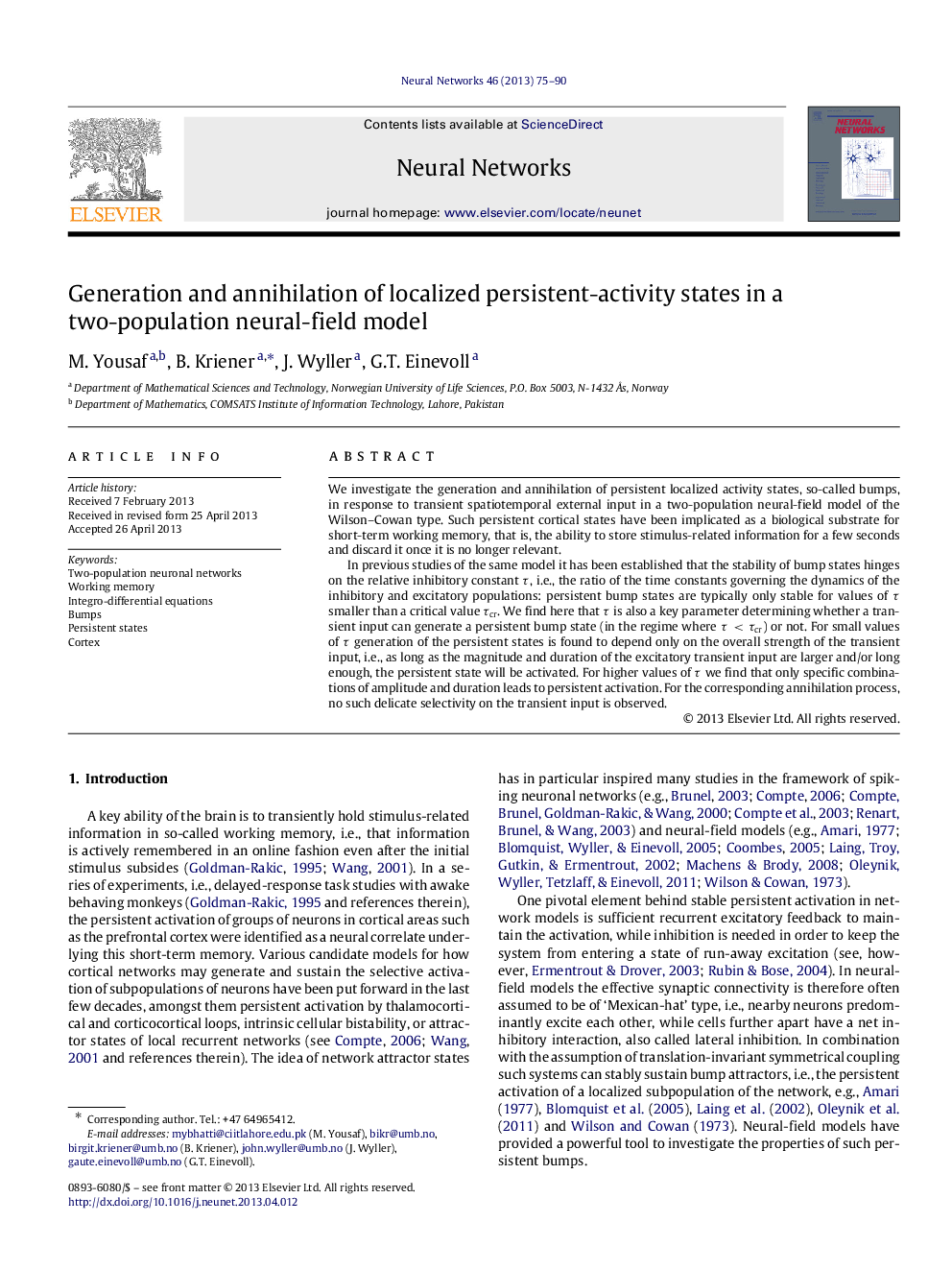| Article ID | Journal | Published Year | Pages | File Type |
|---|---|---|---|---|
| 6863460 | Neural Networks | 2013 | 16 Pages |
Abstract
In previous studies of the same model it has been established that the stability of bump states hinges on the relative inhibitory constant Ï, i.e., the ratio of the time constants governing the dynamics of the inhibitory and excitatory populations: persistent bump states are typically only stable for values of Ï smaller than a critical value Ïcr. We find here that Ï is also a key parameter determining whether a transient input can generate a persistent bump state (in the regime where Ï<Ïcr) or not. For small values of Ï generation of the persistent states is found to depend only on the overall strength of the transient input, i.e., as long as the magnitude and duration of the excitatory transient input are larger and/or long enough, the persistent state will be activated. For higher values of Ï we find that only specific combinations of amplitude and duration leads to persistent activation. For the corresponding annihilation process, no such delicate selectivity on the transient input is observed.
Related Topics
Physical Sciences and Engineering
Computer Science
Artificial Intelligence
Authors
M. Yousaf, B. Kriener, J. Wyller, G.T. Einevoll,
